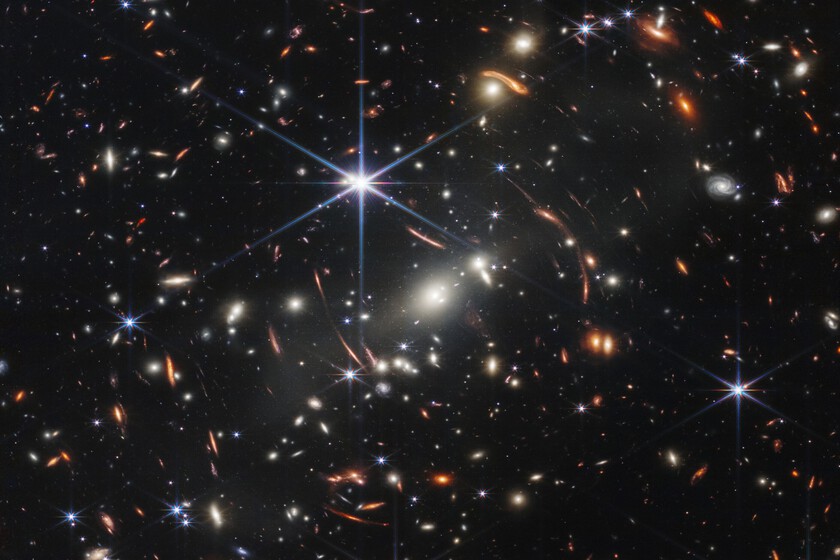[ad_1]
An international team of astronomers has announced that they have discovered the oldest galaxy ever found. The candidate galaxy for the title of oldest observed galaxy is named GLASS-z13 and is estimated to be 13.5 billion years old, about 300 million years after Big Bang. It could be about 33,000 million light-years away from us.
Pending confirmation.
The discovery was announced by an international team of astrophysicists through an article published in the ArXiv repository and authored by Rohan Naidu of the Harvard & Smithsonian Center for Astrophysics. As such, it is still non-peer-reviewed work, although it has generated significant interest in the scientific community.
The discovery was made by the first data released by the JWST. Thanks in particular to the NIRcam instrument, the main receiver of infrared images from the orbiting telescope.
🚨 JWST may have broken records and discovered a galaxy that existed when the Universe was only 300 million years old! It took the light from GLASS-z13 13.4 billion years to hit us, but the distance between us is now 33 billion light years due to the expansion of the universe! pic.twitter.com/5AcOBwHuO1
– dr James O’Donoghue (@physicsJ) July 20, 2022
Paired Discoveries.
More than a curiosity, this discovery can tell us a lot about the time when the first galaxies formed. Among other things, because GLASS-z13 is the oldest observed galaxy, but not the only one of its properties. The galaxy is accompanied by another, GLASS-z11, which is slightly less old at 13.4 billion years.
This “age” refers to the fact that the galaxies existed at that time, although we have no way of knowing how old they were when they emitted the rays of light that reached Webb’s instruments.
Small and primitive.
Galaxies fulfill some of the properties one would expect of them. For example, it is estimated that their size is only a small fraction of the size of the Milky Way. GLASS-z13 is about 1,600 light-years across and has a mass of 1 billion suns. GLASS-z11, slightly larger, would reach 2,300 light-years across.
These galaxies also have simple structures, unlike galaxies like ours that have defined regions like spiral arms that stretch from the galactic center to its periphery.

unexpected features.
So far, so normal, but the find of GLASS-z13 has also brought surprises: It’s noticeably brighter than experts would expect for such a primitive galaxy. This implies that if the observations are confirmed, it would be necessary to review what we know about their formation and the speed at which they were formed.
So far, so normal, but the find of GLASS-z13 has also brought surprises: It’s noticeably brighter than experts would expect for such a primitive galaxy. That is, should the observations be confirmed, it would be necessary to review our knowledge of how they formed and the speed at which they formed. Perhaps it could even mean that galaxies started forming earlier than we thought.
The previous record.
GLASS-z13 is older than the oldest observed galaxy so far: GN-Z11. At 13.4 billion years, this galaxy is about as old as GLASS-z11. GN-Z11 was discovered by the Hubble telescope in 2016.
The combined sample of these three galaxies can help astronomers better understand what the first 500 million years later was like Big Banghow the first galaxies formed and at what speed they were able to form.
work to do.
The obvious first step for Naidu and his team now is to peer review the article and publish it in a journal (although the community is optimistic). In the meantime, keep collecting data. In particular, through a spectroscopic analysis that allows to know more precisely the distance at which it is located.
Just one week after the publication of the first images and data from the JWST, the interesting findings begin. All this despite the numerous problems that the device has been facing in recent weeks. We can only wait for the next (hopefully positive) surprise this multi-million dollar tool has in store for us.
image | POT
[ad_2]
Source link
